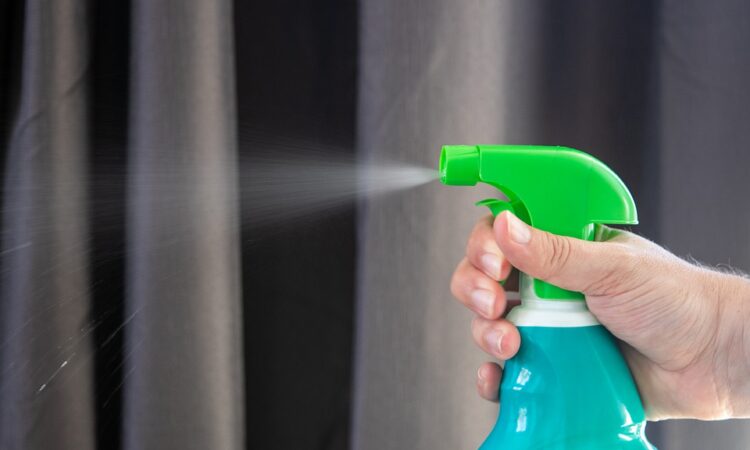
Key Takeaways:
- Odor molecules cause unpleasant odors and are neutralized by altering their chemical structure.
- Understanding the types of odor molecules is crucial in developing effective smell eliminators.
- Neutralizing odors involves oxidation, encapsulation, and chemical reactions with odor molecules.
- Essential oils provide natural fragrance and can help eliminate odor-causing bacteria.
- Synthetic fragrances offer a wider range of scents and longevity compared to natural solutions.
- Enzymatic cleaners and odor absorbers are effective in eliminating lingering pet odors.
- Ventilation systems and odor neutralizers help tackle persistent cooking smells.
- Long-lasting room sprays and portable odor eliminators are effective solutions for freshening up homes and neutralizing odors on the go.
Unraveling the Science Behind Smell Eliminators
Have you ever wondered what causes those unpleasant odors that seem to linger in your home or workspace? The answer lies in odor molecules. These tiny particles are released into the air from various sources such as pets, cooking, and even our own bodies. When these odor molecules come into contact with our olfactory receptors, they trigger a response in our brains, resulting in the perception of smell.
The chemistry of neutralizing odors is a fascinating process. Smell eliminators work by altering the chemical structure of odor molecules, rendering them odorless or less noticeable to our olfactory receptors. This process involves binding to the odor molecules and either breaking them down into smaller, less potent compounds or encapsulating them to prevent their release into the air.
The Role of Odor Molecules
Odor molecules come in various shapes and sizes, each contributing to different smells. Some odor molecules are volatile, meaning they easily evaporate into the air and are therefore more noticeable, while others are less volatile and may take longer to dissipate. Understanding the types of odor molecules present in specific scents is crucial in developing effective smell eliminators.
For example, the odor molecules responsible for pet odors are often derived from compounds found in urine, feces, or natural secretions. These molecules are highly volatile and can linger in the air and on surfaces for extended periods of time. By targeting these specific odor molecules, smell eliminators can effectively neutralize pet odors and create a more pleasant environment.
The Chemistry of Neutralizing Odors
The chemistry behind neutralizing odors involves the use of various compounds and substances that interact with odor molecules. One common method is oxidation, where odor molecules are broken down through chemical reactions with oxygen. This process can be achieved through the use of oxidizing agents such as hydrogen peroxide or ozone.
Another approach is encapsulation, where odor molecules are trapped within a substance, preventing their release into the air. This method is often used in fabric fresheners or air fresheners that contain microencapsulated fragrance oils. When the encapsulated fragrance is disturbed, such as by rubbing a fabric or spraying the air freshener, the fragrance is released, masking any unpleasant odors.
Furthermore, certain compounds have the ability to chemically react with odor molecules, transforming them into less noticeable compounds. An example of this is the use of activated charcoal, which has a porous structure that can effectively absorb and trap odor molecules.
The Secret Ingredients: Exploring Natural and Synthetic Solutions
Harnessing the Power of Essential Oils
Essential oils have gained popularity in recent years for their natural fragrance and potential health benefits. These concentrated plant extracts are derived from various parts of plants, such as leaves, flowers, or roots, and are known for their aromatic properties. In addition to providing pleasant scents, some essential oils have antimicrobial properties that can help eliminate odor-causing bacteria.
When used as a component in smell eliminators, essential oils can provide a natural and refreshing fragrance while effectively neutralizing odors. Common essential oils used in smell eliminators include lavender, citrus, and eucalyptus, which not only mask unpleasant odors but also create a sense of relaxation and well-being.
The Art of Formulating Effective Synthetic Fragrances
While natural solutions like essential oils have their benefits, synthetic fragrances can offer a wider range of scents and longevity. The art of formulating synthetic fragrances involves a combination of science and creativity.
Synthetic fragrances are created in laboratories and can be tailored to mimic the scents of various natural substances or even produce entirely unique fragrances. These fragrances are carefully composed using a blend of aroma chemicals that interact with odor molecules to mask or neutralize them. The selection and combination of these aroma chemicals require expertise and an understanding of scent chemistry.
Additionally, synthetic fragrances offer benefits such as stability, consistency, and affordability. They can be designed to withstand different environmental conditions, ensuring longer-lasting and more consistent scent profiles.
Tackling Stubborn Odors: Targeted Solutions for Specific Scents
Eliminating Lingering Pet Odors
Pet owners often face the challenge of persistent pet odors that can permeate their homes. The key to eliminating these odors lies in understanding their sources and implementing targeted solutions.
One effective approach is the use of enzymatic cleaners, which contain enzymes that break down organic compounds found in pet urine or feces. These enzymes are capable of degrading odor-causing molecules, effectively eliminating the source of the smell.
In addition to enzymatic cleaners, odor absorbers can be used to neutralize pet odors. These products contain substances like activated charcoal or zeolite, which can absorb and trap odor molecules, leaving the air fresh and odor-free.
Cracking the Code of Persistent Cooking Smells
Cooking can fill our homes with delightful aromas, but it can also leave behind lingering odors that are stubborn to eliminate. The key to neutralizing cooking smells is to tackle them at their source.
An effective method is to use ventilation systems, such as range hoods, to remove cooking odors directly from the source. These systems extract the air, filter out the odors, and expel the clean air outdoors. Additionally, using exhaust fans or opening windows while cooking can help remove cooking smells.
For lingering cooking odors, odor neutralizers can be utilized. These products are specifically designed to eliminate the strong odors associated with cooking, such as garlic or fish. By targeting the specific compounds responsible for these smells, odor neutralizers can effectively eliminate them, leaving the air fresh and clean.
From Home to On-the-Go: Odor Solutions for Every Situation
Keeping Your Home Fresh with Long-Lasting Room Sprays
Room sprays offer a quick and convenient solution for freshening up your living space. These products contain fragrance oils or synthetic fragrances that can be sprayed into the air, instantly masking unpleasant odors.
Long-lasting room sprays are formulated with ingredients that help the fragrance linger in the air for an extended period, ensuring a continuous fresh scent. The choice of fragrance is subjective, but popular options include floral, citrus, or clean linen scents.
Effective Strategies for Neutralizing Odors on the Go
When it comes to neutralizing odors while on the go, portable odor eliminators are the perfect solution. These handy devices come in various forms, such as sprays, gels, or even small charcoal sachets.
For eliminating odors in cars, car air fresheners are specifically designed to neutralize odors from the confined space of a vehicle. They come in various forms, including liquid, gel, or vent clips, and can provide a refreshing fragrance while effectively tackling unwanted odors.
When dealing with odors in public spaces or shared environments, such as offices or gyms, odor absorbers can be discreetly placed to eliminate unpleasant smells. These absorbers can be in the form of sachets, beads, or plug-in devices, offering long-lasting odor relief.
With a deeper understanding of the science behind smell eliminators and the wide range of solutions available, you can now confidently tackle unpleasant odors in every aspect of your life. Whether it’s eliminating pet odors, freshening up your home, or neutralizing odors on the go, the power of scent is in your hands.
FAQ
Question: How do smell eliminators work? – Smell eliminators work by altering the chemical structure of odor molecules, rendering them odorless or less noticeable to our olfactory receptors.
Question: What are the types of odor molecules? – Odor molecules come in various shapes and sizes, each contributing to different smells. Some are volatile and easily evaporate into the air, while others are less volatile and may take longer to dissipate.
Question: What are the methods used to neutralize odors? – The methods used to neutralize odors include oxidation, encapsulation, and chemical reactions with odor molecules.
Question: What are some natural solutions for smell elimination? – Essential oils provide natural fragrance and can help eliminate odor-causing bacteria.
Question: What are the benefits of synthetic fragrances? – Synthetic fragrances offer a wider range of scents and longevity compared to natural solutions.
Question: How can lingering pet odors be eliminated? – Enzymatic cleaners and odor absorbers are effective in eliminating lingering pet odors.
Question: How can persistent cooking smells be tackled? – Ventilation systems and odor neutralizers help tackle persistent cooking smells.
Question: What are some odor solutions for freshening up homes and neutralizing odors on the go? – Long-lasting room sprays and portable odor eliminators are effective solutions for freshening up homes and neutralizing odors on the go.




